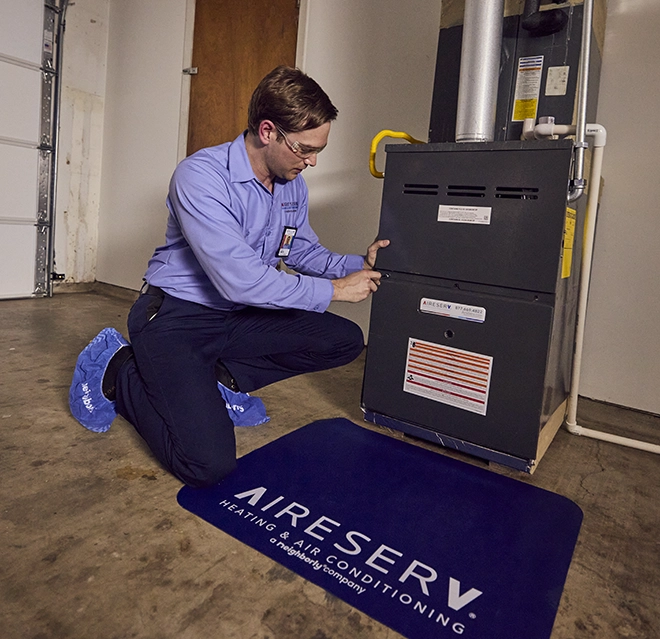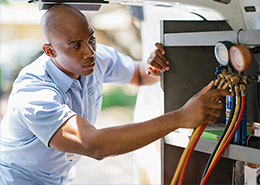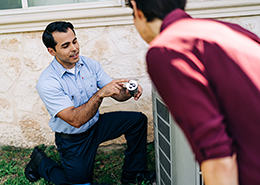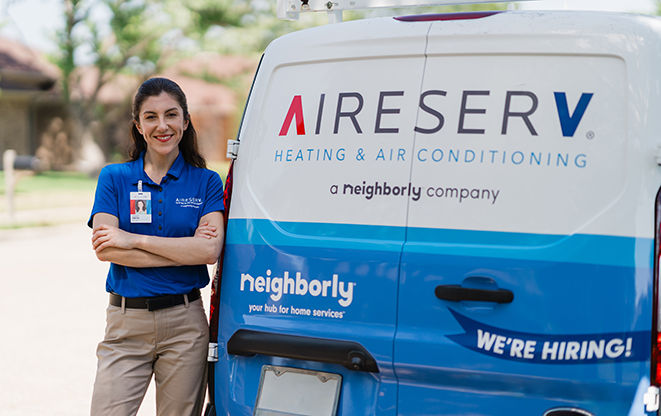Sometimes, receiving a new Rockwall furnace installation will turn out to be more cost-effective than a repair service and could save you money on your monthly utility bills by reducing your natural gas and electricity consumption, especially if your unit is more energy efficient. Plus, you’ll reap numerous benefits by protecting your indoor structures with a Rockwall furnace installation. Rockwall, TX homeowners who remain complacent about their HVAC system will quickly find one problem developing into the next. For example, increased humidity levels stemming from a malfunctioning furnace can not only cause mold growth but result in wood rot on nearby structures. It can also lead to excess dust and debris due to a dirty air filter compromising your indoor air quality and your health. So besides the lack of indoor living comfort, you’re now dealing with costly repairs and health issues. Despite the type of unit you want to be installed during the Rockwall furnace installation service, you can depend on our experienced HVAC team members for skilled workmanship and superior customer service.
Our Verified Rockwall Furnace Installation Process
Before hiring us for a new Rockwall furnace installation, we’re happy to guide you through the different types and characteristics during a formal in-home consultation and inspection. Furnaces are based on their power source to add-on essential components that make your unit more energy efficient. Consider important factors, such as fuel source, your house size (in cubic feet), air ducts, and AFUE rating. We understand that it is a big investment for many homeowners to choose the right furnace installation. Rockwall, TX residents who are still indecisive can count on our HVAC professional technicians to complete a small energy audit and compare your current energy bills. Together, we’ll weigh the pros and cons.
Common Types of Furnace Installation | Rockwall, TX
Furnaces are either powered by natural gas or electricity. For most furnace installations in Rockwall, TX, both types of power sources are common. However, the demand for electricity-powered furnaces has steadily increased. This is mostly because these sorts of heating systems have a longer lifespan with relatively less maintenance. That is because Texas is known to be one of the hottest states in America and people probably have their air conditioning systems on for the most part of the year.
Natural Gas:
Natural gas units often have lower upfront installation costs and can heat a confined space significantly fast. They and have cleaner burning compared to conventional fossil fuels like heating oil. They are also more efficient. It’s less expensive to operate a gas furnace, which means you may deal with a lower utility bill thanks to its efficient energy usage. The only disadvantage is that you need to stay on top of routine maintenance, which includes consistent cleaning of the burners. It requires more space for bulky ductwork, which also needs lots of upkeep, such as air duct cleaning and inspection. If you fail to properly maintain a gas-powered unit, you risk experiencing gas leaks and other dangers.
Electric:
This furnace has higher upfront installation costs, operates more quietly, has longer lifespans, provides moderate humidity levels and doesn't dry out your indoor air quality, requires less maintenance, and poses no safety hazard in terms of producing poisonous gasses or accidental house fires. These are also energy efficient as they don’t require the burning of fossil fuels, and you don't have to worry about fluctuating or inflated gas prices.







